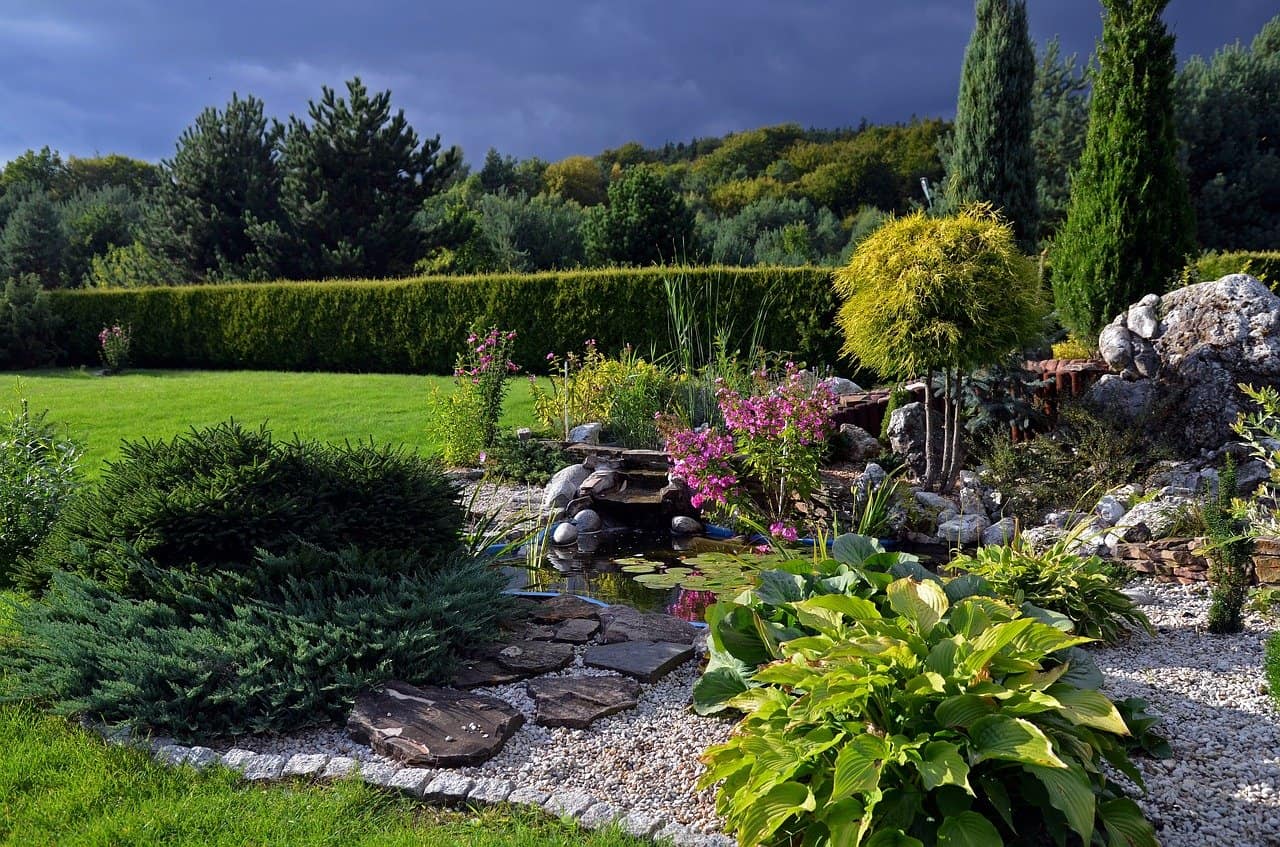
Establishing a home rockery is not such a difficult task as it may seem. However, it does require a lot of work. When creating a rockery, knowledge of plants and the use of decorative stones will also be necessary.
A rockery in the garden should only imitate nature. After all, it is nothing more than a separate small part of the garden that is overgrown with low-growing flowers surrounded by stones – which is more like a mountain meadow.
A rock garden can take any form. It’s best when it is not “run from a ruler”. It is advisable to start “creating” a rock garden by drawing it on a piece of paper, which makes it easier to place plants and stones – this way you can avoid many planting mistakes!
Even the smallest rockery attracts attention, so its location in the garden cannot be accidental. The rockery should fit in with the overall architecture of the garden in which it is located – it can be part of an embankment or completely “flat”, in the form of stone paths overgrown by low plants forming a carpet
The choice of plants also depends on the place where the rockery is established. Most plants that are ideal for this are plants that prefer sunny places. Such a place is usually in the garden on the south or southwest side. You should not build a rockery close to trees because they give too much shade and their roots take up a lot of water.
When you have chosen a suitable place in your garden for the rockery, you have to remove the top layer of soil there. Small stones and coarse gravel should be placed at the bottom of this place – they will create a perfect drainage layer. If the soil is well-drained, then all you have to do is dig it up and remove the top layer and weeds.
The trench should always be larger than the planned rockery. It is a good idea to line the edges of the rockery with non-woven fabric, and then cover them with small stones and gravel. This will prevent grass and weeds from growing on the rock bed.
Stones are one of the most important elements of a rockery, but it should be remembered that stones on a rock ery should not take up more than 50% of its surface. Rocks that have an irregular shape and sharp edges will be the best for building a rockery. These include:
It is advisable to choose one or two kinds of stones, which should be piled up, creating horizontal shelves. The bottom of the rockery should be laid with the largest stones, burying them in the ground to the depth of 1/3 of their size – this will be a solid foundation for the whole structure. Then lay another layer of stones, watering them generously so that the soil settles. After about 2 weeks, when the soil has settled, you can start planting plants
In garden rockeries should not be planted only mountain plants, but plants from different environments. The most popular plants for a rockery are low species with intense colors and strong scents. Smaller plants are always planted in front and larger ones in the back. The most popular plants planted on a rockery are:
Bulbous plants will also do well on a rockery:
The rock garden should also have a background of coniferous plants, such as junipers, spruces and cypresses.
A rock garden can be planted at any time but it is advisable to do it in the spring – the plants will have more time to “take up”. During the summer months it is not advisable to plant a rockery because of the heat